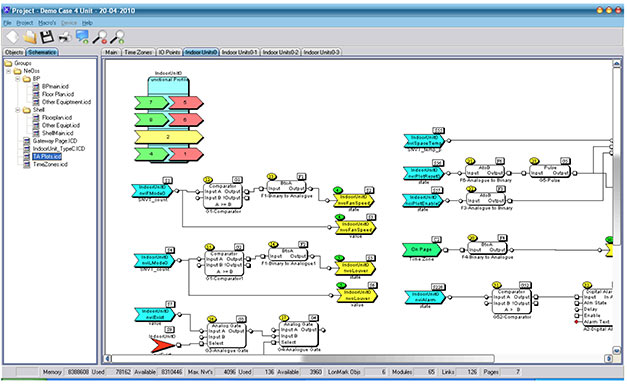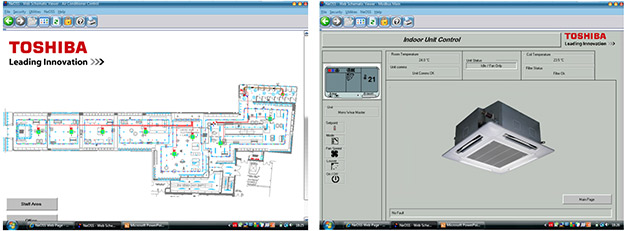Toshiba launches user-friendly mini-BMS
28th July 2016UK: Toshiba has launched a new mini-BMS system designed to be easy to operate by those not familiar with air conditioning.
It is said to achieve this level of simplicity without sacrificing power, effectiveness or analytical capabilities. It is designed to work across all digital platforms, enabling users to access their system using a standard PC internet browser, a tablet or smartphone.
It provides access to control parameters for indoor units and outside plant, plus full temperature reporting and logging and power monitoring for the whole building. It enables remote access to control and monitoring functions via the internet, giving a flexible tool to monitor and control the system, as well as diagnose potential problems remotely.
The system is designed to help break down traditional barriers between the user and their air conditioning system. In the event of a problem, it can automatically send an email or text alerts to notify a building manager that an issue needs attention.
The Mini-BMS logs and stores energy usage data to provide a valuable record which can be analysed in detail. It can do this for the whole building or specified parts of a building, giving the user the ability to automatically graph and evaluate performance over time, a part of an ongoing energy management programme.
In addition to the on-board pre-set controls, the unit is said to be freely programmable, for both graphics and functions, using engineering software. This enables engineers to add bespoke functions in order to customise the system for use with specific applications.
“The majority of BMS systems on the market are developed and engineered by building controls specialists. They therefore provide a general solution for building control, and require specialist skills to set-up and operate,” explained Toshiba Air Conditioning director and general manager David Dunn.
“In contrast, Toshiba’s mini-BMS has been designed from the ground up to be easy to operate by non-specialists without knowledge of air conditioning systems, providing significant advantages in terms of speed of setup, flexibility and ease of use.”
He added: “It enables air conditioning engineers to quickly set up and configure a new system across a whole building, and enables an existing system to be easily changed in the light of changes to building use. For the end user, it provides an accessible and easy-to-use interface for controlling and monitoring their air conditioning system on a daily and ongoing basis.”









